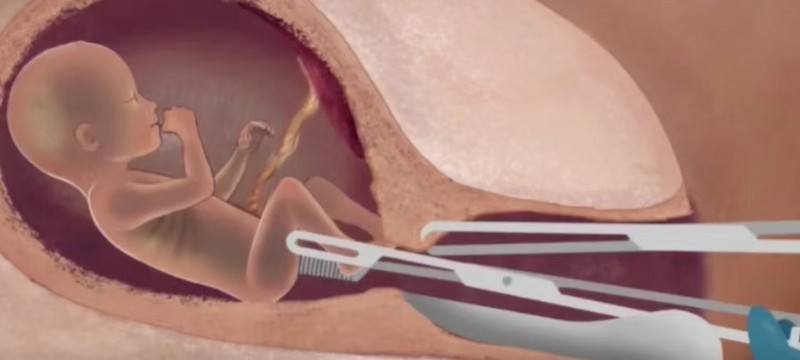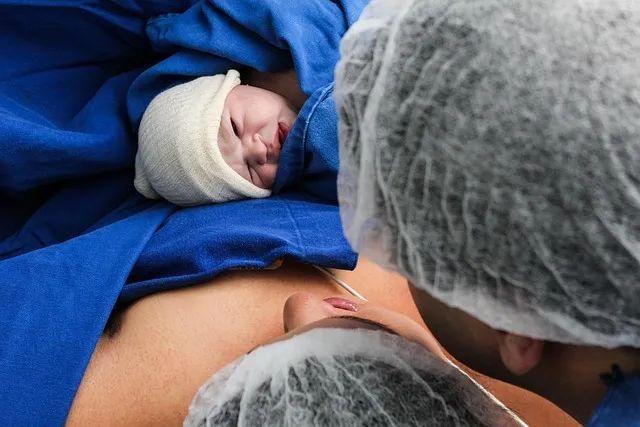Fetal heart and fetal buds during pregnancy for surrogate mothers to safeguard fetal health

For surrogate mothers, fetal heartbeat and fetal bud monitoring during pregnancy is a central part of assessing the survival and development of the embryo. Fetal heart (fetal heartbeat) and fetal buds (early embryonic morphology) are not only signs of the presence of life, but also key indicators of fetal health. According to data, even if the embryo is successfully placed in the womb, 10% to 15% of pregnancies are still terminated due to abnormal fetal heartbeat and fetal buds. This article will systematically analyze the clinical significance of fetal heartbeat and fetal buds during pregnancy, monitoring strategies and international management standards for surrogate mothers, providing scientific guidance for surrogate families.
I. Biological significance and developmental time line of fetal heart and fetal buds
- Definition of fetal heart and fetal buds
Fetal heart: the rhythmic signal produced by the fetal heart beat, with a normal frequency of 110~160 beats per minute, reflecting the function of the cardiovascular system.
Fetal bud: the primary embryonic structure formed by the fertilized egg until 5~7 weeks of gestation, containing the prototype of primitive organ system.
- Developmental time window
Emergence of the fetal buds: transvaginal ultrasound can observe fetal buds as early as 5 weeks of gestation (21 days after ovulation), with a length of about 2~4mm.
Fetal heart emergence: Fetal heart beat can be detected at 6~7 weeks of gestation (35~42 days after ovulation), which is 1~2 weeks later than the fetal bud.
Individual differences:
Individuals with irregular menstrual cycles: if ovulation is delayed, the appearance of fetal heartbeat and fetal buds may be delayed by 1~2 weeks.
IVF pregnancy: based on the embryo transfer date, the fetal heart should be confirmed 28~35 days after the transfer (7~8 weeks of pregnancy).
Second, the clinical value of fetal heart and fetal buds in surrogate mother’s pregnancy
- Direct evidence of embryo survival
Positive predictive value: fetal heart and fetal buds are detected at 7 weeks of gestation, and the rate of sustained pregnancy can reach 90%~95%.
Negative predictive value: no fetal heartbeat or buds at 8 weeks of gestation, risk of embryonic abruption >90%.
- Comprehensive assessment of fetal health
Abnormal fetal heart rate warning:
Tachycardia (>160bpm): may be triggered by maternal fever, hyperthyroidism, or fetal anemia.
Bradycardia (<110bpm): alert for chromosomal abnormalities (e.g. trisomy 13/18) or congenital heart disease.
Fetal bud growth rate: Normal bud growth is 1mm per day, but no growth for 7 consecutive days suggests stagnation.
- Guidance for clinical decision-making
Indications for continuation of pregnancy: Regular fetal heartbeat, bud growth consistent with gestational week, and normal morphology of the gestational sac (round or oval).
Indications for termination of pregnancy:
The average diameter of the gestational sac is ≥25mm without buds.
Fetal bud length ≥7mm without fetal heartbeat
Loss of fetal heartbeat after 9 weeks of gestation
III. International standards for monitoring fetal heartbeat and fetal buds during pregnancy in surrogate mothers
- Ultrasound examination norms (FIGO guidelines)
Timing of examination:
Initial confirmation: transvaginal ultrasound (TVS) at 6-7 weeks of pregnancy to detect fetal heartbeat and fetal buds.
High-risk pregnancy: multiple births, history of recurrent miscarriage need to be advanced to 5 weeks of pregnancy monitoring.
Equipment requirements: high-frequency probe (≥7MHz) to ensure resolution, Doppler flow to monitor uterine artery PI value (normal <1.5).
- Integration of multimodal indicators
β-hCG dynamic monitoring:
At 5-6 weeks of gestation: β-hCG should reach 1000-5000 mIU/mL with a 48-hour increase of ≥53%.
At the onset of fetal heartbeat: β-hCG is usually >7500 mIU/mL.
Progesterone threshold:
Early pregnancy needs to be maintained >15 ng/mL, below 10 ng/mL intensive luteal support is required.
Ⅳ.Diagnosis and management of abnormal fetal heartbeat and fetal buds
- Embryonic Fetal Arrest (Missed Abortion)
Diagnostic criteria (ACOG):
Gestational sac ≥25mm without fetal buds
Fetal buds ≥7mm without fetal heart
Loss of fetal heart within 2 weeks after the first sight of fetal heartbeat
Treatment options:
Medication abortion: mifepristone + misoprostol, success rate >90%.
Hysterosalpingography: for up to 9 weeks gestation to reduce the risk of tissue retention.
Case 1: Emily Johnson’s treatment experience
Emily, 32 years old, surrogate mother at 7 weeks of pregnancy TVS showed 4mm of fetal buds but no fetal heart, β-hCG plateau (7200→7500 mIU/mL). Hysteroscopic clearance was performed after diagnosis of embryonic arrest and pathology suggested chorionic villous dysplasia. Follow-up chromosomal testing revealed that the embryo was trisomy 16.
- Threatened Abortion
Clinical manifestations: vaginal bleeding (bright red or brown), mild abdominal pain.
Ultrasound features: fetal heart is present but bud growth is retarded (<0.6mm/day), and the gestational sac is irregular. intervention strategy: Luteal support escalation: vaginal progesterone increased to 200 mg/day in combination with hCG 2000 IU intramuscularly. Immunomodulation: prednisone 5mg/day for those with NK cell activity >18%.
Case 2: Sophia Martinez’s journey of fertility preservation
Sophia, 29 years old, presented with a small amount of bleeding at 6 weeks gestation, TVS showed a fetal heart rate of 115 bpm and a bud growth rate of 0.4 mm/day. After heparin (40mg/day) + aspirin (81mg/day) treatment, the fetal heart rate recovered to 145bpm at 10 weeks of gestation, and the pregnancy was successfully carried to term.

V. Technological innovations in fetal heartbeat and fetal bud monitoring in surrogate mothers
- Artificial intelligence (AI) assisted diagnosis
Automatic measurement system: AI algorithm calculates the length of the fetal bud (CRL) and the diameter of the gestational sac (MSD) in real time with an error of <0.1mm.
Risk prediction model: integrating fetal heart rate variability (HRV) and uterine blood flow data to warn of miscarriage risk.
- 3D ultrasound and energy Doppler
Volumetric imaging: reconstruction of the embryo’s three-dimensional structure, early detection of neural tube defects.
Perfusion assessment: detect intervillous blood flow index (VI<2.0 suggests placental insufficiency).
- Non-invasive embryonic DNA analysis
Free Fetal DNA (cffDNA) testing: screening for chromosomal aneuploidy through maternal blood after 7 weeks of pregnancy, accuracy rate >99%.
VI. Psychological support and long-term management of surrogate mothers
- Psychological intervention strategies
Cognitive Behavioral Therapy (CBT): Correct the wrong cognition such as “slow fetal heartbeat = weak fetus” to relieve anxiety.
MBSR: 10 minutes of daily meditation to reduce cortisol level by 30%.
- Prevention of recurrent miscarriage (RPL)
Etiologic screening: antiphospholipid antibodies, thyroid function, hysteroscopic evaluation.
Pretreatment program:
Low molecular heparin: start 1 month before pregnancy in patients with antiphospholipid syndrome.
Immunoglobulin: monthly infusion of 0.4g/kg in patients with persistently elevated NK cell activity.
VII. International Frontier: New breakthroughs in fetal heart and bud research
- Optimization of mitochondrial function
Coenzyme Q10 supplementation: 600mg/day to improve the mitochondrial function of oocytes and enhance the quality of embryos.
- Epigenetic regulation
Histone deacetylase inhibitor: experimental drug to improve gene expression during embryo implantation.
- Uterine microenvironment remodeling
Stem cell therapy: mesenchymal stem cell intrauterine perfusion to repair thin endometrium (<7mm), clinical pregnancy rate increased by 40%.
VIII. Frequently Asked Questions (FAQ)
- Do I need to fast for a fetal heart and bud test?
No. Transvaginal ultrasound does not require fasting, but bladder emptying is required to obtain clear images.
- Are fluctuations in fetal heart rate normal?
Yes. The fetal heart rate may accelerate briefly (>170 bpm) during activity and may drop to 110-120 bpm during sleep, with a difference of <30 bpm being normal.
- What is the best way to intervene if the fetal buds are small?
Nutritional support: increase protein intake (1.5g/kg/day).
Vasodilation: sildenafil (25mg/day) to improve uterine perfusion.
IX. Summarize: scientific monitoring escort early life
Monitoring of fetal heart and fetal buds during pregnancy in surrogate mothers is the cornerstone of pregnancy management. Through standardized ultrasound assessment, integration of multimodal indicators and individualized intervention, the rate of early pregnancy loss can be reduced to less than 5%. Surrogate families should establish a close collaboration with the reproductive medicine team to welcome new life with science and confidence.






